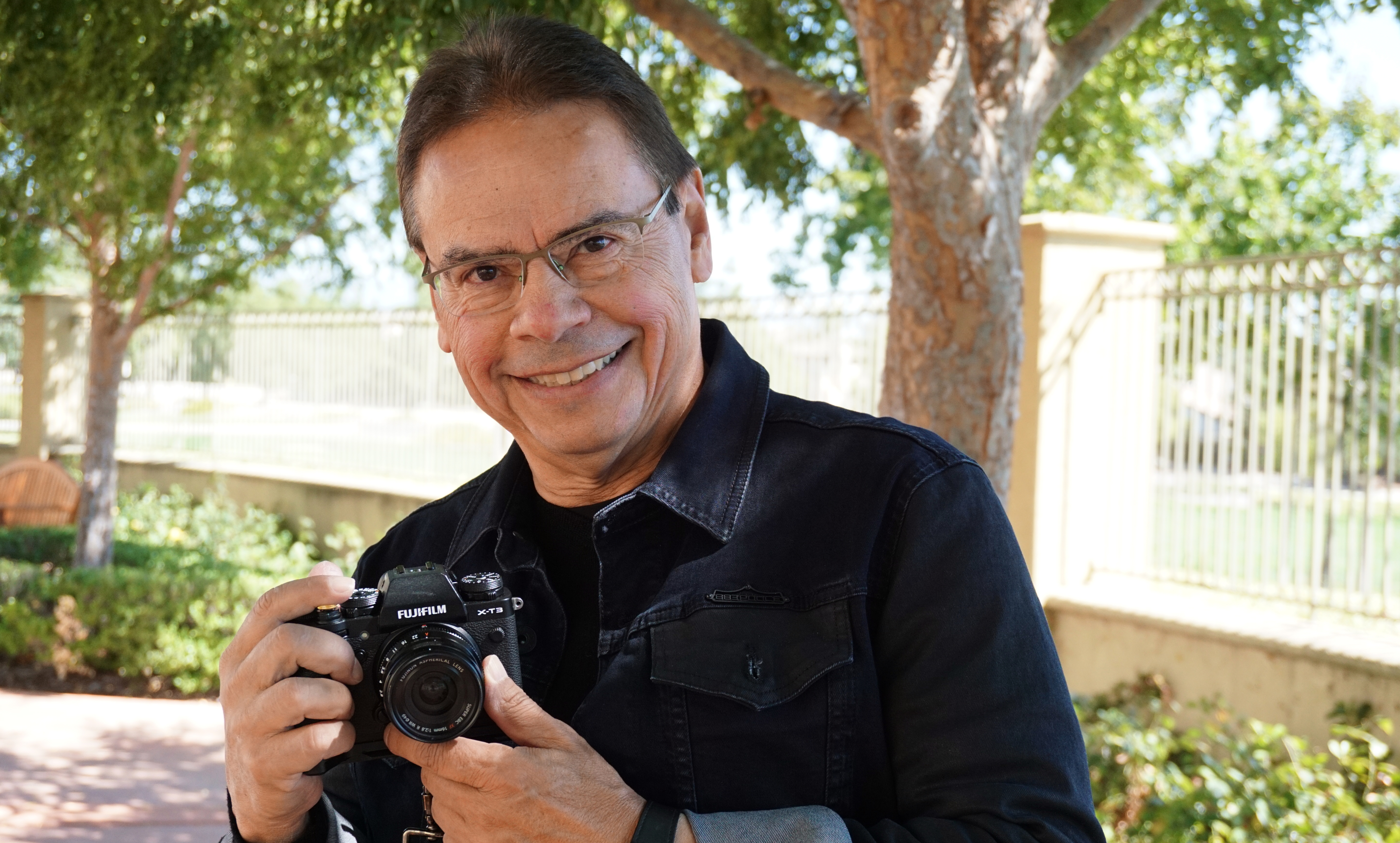By Keith Walsh
California-based photographer Anthony Feliciano is an open minded guy – but there’s one thing he doesn’t like.
“I would say I don’t like phone photography,” he says. “There are several reasons. They’re taking away from my business, one. Number two, everyone thinks it’s easy. Everyone takes a vertical shot – that’s not gonna work.”
So aside from the bad aesthetics of taking shots vertically, Feliciano points out the sensor on smart phones are much smaller than that on a digital DSLR or mirrorless camera. “The sensors on these cellphones,” he explains, “are like the size of my pinky nail. You’re asking a tiny sensor to do all of this. The image is processed through the sensor. And so is the video by the way.” Sensors in standard consumer and professional digital cameras range from about two thirds of an inch to an inch or more in size.

Feliciano continues: “There are nine billion people in the world, and there’s probably ten billion cell phones. And what’s happening is people are depending on their smart phones to do everything, including video and photos. And it gives them the impression that it’s quite easy to poke that out there and take the shot. What’s happening is that people have the wrong impression on what photography is about.” Feliciano estimates that in the past two years, up to forty percent of his wedding and portrait photography business has been impacted by the influx of amateurs using smartphones.
It turns out there’s a lot more to photography than just taking a shot. With a myriad of controls, SLRs and mirrorless digital cameras offer a variety of features that cell phones today just don’t have. And though phone manufacturers try to keep up with legitimate cameras, they miss the mark. “With Apple, the 11 Pro and so on” Feliciano says, “they have three lenses on it, and they can create the bokeh –which is the blurred background – behind the subject. That’s all good, but it’s still not the same. You still don’t have the controls that you have with your mirrorless camera or the SLR camera.” Anthony’s preferred camera is a Fuji XT-3, followed by the Fuji X-H1.
Feliciano explains that the controls on today’s digital cameras often use vocabulary borrowed from the days of film, with all of the technicality that involves. “You have different aperture modes,” he says. “You can do wider, you can do narrower, you can pinpoint the focus point, which you can’t do a lot on these cell phones. Eye detection, face detection – they have it too but it’s not advanced like the mirrorless camera systems.”
Feliciano also recommends that people going on a vacation invest in an actual camera, rather than using their cellphones. “I’ve seen people spend thousands of dollars to go on a safari, or a foreign country, and all they have is their cell phone,” he says. “And they’re doing this everywhere they go” (he mimes taking a vertical shot with a phone.) Feliciano points to the limited storage on phones, and their increased size and cost, as reasons to invest in a pro or high end consumer camera instead. Some examples of high end consumer cameras that will be adequate for a variety of purposes are the Sony a6000 or the Fuji XT-30.
Feliciano has adapted to the changes in the photography industry by taking on a variety of roles. “You have to be flexible, and be in your own business,” he says. “What I mean by that is you have to be able to transition to something else. You can’t rely on always having a wedding, you can’t rely on having a portrait session or even that it will pay your bills. I teach three nights a week, I do a weekend workshop, I do public speaking. I’m also going to be teaching a video editing workshop. If you rely on just one thing, there’s a possibility that it may not work out for you.” In addition, Feliciano works as a videographer and is president of the Rancho Cucamonga Photo Club in Southern California.
His advice to those seeking to capture forever moments with photos: hire a professional. “Most people are on a budget,” he explains. “And they want as little as possible. They don’t understand that it’s forever — that it’s one that you could put on your fireplace. You’re going to look at it in sixty years, and say, ‘remember when we did that? And that’s not from a cellphone. That’s from a guy who could can control his camera and knows what he’s doing.’“
https://www.instagram.com/afshutterphotos/
